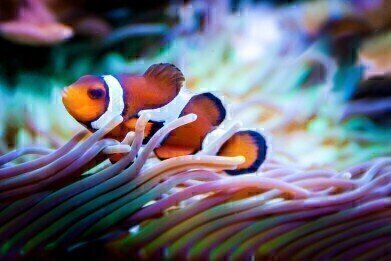News & views
How Has Banning Fishing Helped the Great Barrier Reef?
Apr 11 2016
Celebrated as the biggest living organism on the planet, the Great Barrier Reef is a mecca for marine lovers. Though beautiful as it is, the world’s most famous reef is vulnerable to a host of threats, both natural and manmade. As well as storms, coral bleaching, pollution and diseases, fishing has played a major role in causing the iconic natural landmark to half its footprint since 1985.
In a desperate effort to save the delicate marine ecosystems, the Australian government introduced fishing bans. While these are sometimes controversial, a team of scientists is asserting that the establishment of ‘no take’ reserves has had a hugely positive impact on the Great Barrier Reef.
Two decades of data
Drawing on data gathered from 1993 to 2013, the team carried out an in-depth analysis of 34 coral/invertebrate species and 215 fish species living across 46 reefs. Of these, 26 were open to fishing while the remaining 20 were classified as no-take marine reserves. Over the course of 20 years the sites endured a variety of disturbances, including outbreaks of crown-of-thorns starfish.
After comparing data the team found that the impact of events on no-take marine reserves was 38% less damaging for fish and 25% for coral, when compared to their unprotected counterparts. This means that as well as benefiting fish, status as a no-take reserve also supports the health of reef communities as a whole.
No-take zones support a faster recovery
Not only did no-take zones empower fish and coral with greater resistance to disturbances, but they also sped up recovery processes. According to data, reef organisms in protected areas were much faster at returning to their pre-disturbance states. For example, after a starfish outbreak it took no-take marine reserves six years to recover, in comparison to the nine years needed by non-protected areas.
Ultimately, the research suggests that when it comes to conservation, no-take zones could play an important role in slowing the degradation of the Great Barrier Reef, and helping it regain its expansive footprint. On a global scale, the concept could be the key to helping the Convention on Biological Diversity achieve its goal of 10% no-take ocean coverage by 2020.
Science plays a pivotal role in environmental conservation, as demonstrated by the latest research into no-take zones. For a closer look at the latest marine research, ‘Electron Microscopy Reveals Secrets of Nanocrystal-Assembly in Coral Skeletons’ dives into the delicate relationship between growth conditions and reef health, using atomic level microstructure to understand the patterns of assembly that make up the organism’s nanocrystalline skeleton.
Digital Edition
Lab Asia 31.6 Dec 2024
December 2024
Chromatography Articles - Sustainable chromatography: Embracing software for greener methods Mass Spectrometry & Spectroscopy Articles - Solving industry challenges for phosphorus containi...
View all digital editions
Events
Jan 22 2025 Tokyo, Japan
Jan 22 2025 Birmingham, UK
Jan 25 2025 San Diego, CA, USA
Jan 27 2025 Dubai, UAE
Jan 29 2025 Tokyo, Japan



















